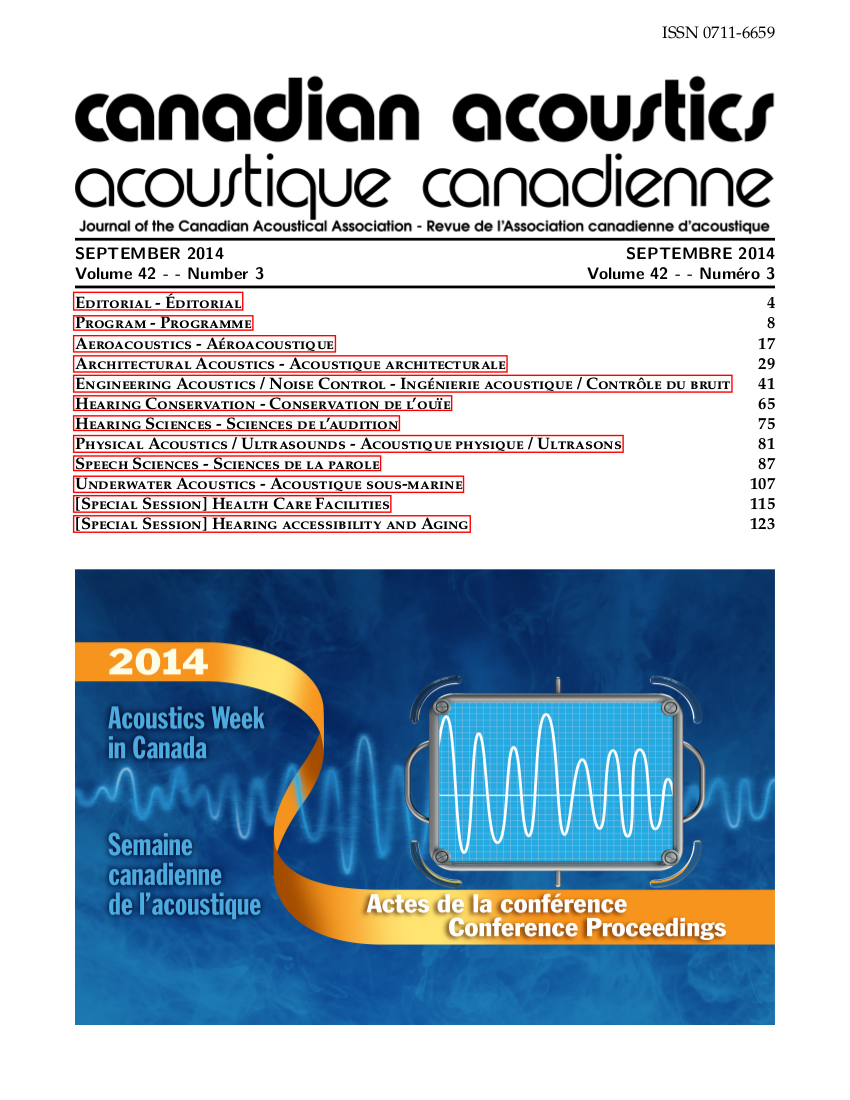A new research environment for speech testing using hearing-device processing algorithms
Abstract
A common complaint among subjects with hearing loss is the difficulty of understanding speech in the presence of background noise. Speech testing is an integral part of a clinical assessment of hearing loss, complementing the pure tone audiogram and providing useful information regarding speech tolerance and recognition ability as well as helpful cues for hearing-aid fitting. Among other indicators, speech tests are used to determine the speech reception threshold (SRT) defined as the lowest level at which speech can be correctly identified at least 50 percent of the time. The use of such tests is very popular in research as it allows an experimental manipulation of listening conditions in order to study their effects on speech perception with respect to a baseline condition.
In this work, we present a new software-based speech testing environment developed in MATLAB in order to facilitate research in speech perception. It includes a graphical user interface which, in addition to the controls required to run the speech test, provides parameters to specify a subject’s hearing profile and a range of listening and processing conditions. It makes use of head-related transfer functions (HRTFs) to simulate different spatial configurations for binaural listening, and a hearing-device simulator to perform a variety of signal-processing conditions commonly found in hearing devices. The system’s design and feature set will be described along with some experimental results collected using the speech material from the Hearing in Noise Test (HINT).Additional Files
Published
How to Cite
Issue
Section
License
Author Licensing Addendum
This Licensing Addendum ("Addendum") is entered into between the undersigned Author(s) and Canadian Acoustics journal published by the Canadian Acoustical Association (hereinafter referred to as the "Publisher"). The Author(s) and the Publisher agree as follows:
-
Retained Rights: The Author(s) retain(s) the following rights:
- The right to reproduce, distribute, and publicly display the Work on the Author's personal website or the website of the Author's institution.
- The right to use the Work in the Author's teaching activities and presentations.
- The right to include the Work in a compilation for the Author's personal use, not for sale.
-
Grant of License: The Author(s) grant(s) to the Publisher a worldwide exclusive license to publish, reproduce, distribute, and display the Work in Canadian Acoustics and any other formats and media deemed appropriate by the Publisher.
-
Attribution: The Publisher agrees to include proper attribution to the Author(s) in all publications and reproductions of the Work.
-
No Conflict: This Addendum is intended to be in harmony with, and not in conflict with, the terms and conditions of the original agreement entered into between the Author(s) and the Publisher.
-
Copyright Clause: Copyright on articles is held by the Author(s). The corresponding Author has the right to grant on behalf of all Authors and does grant on behalf of all Authors, a worldwide exclusive license to the Publisher and its licensees in perpetuity, in all forms, formats, and media (whether known now or created in the future), including but not limited to the rights to publish, reproduce, distribute, display, store, translate, create adaptations, reprints, include within collections, and create summaries, extracts, and/or abstracts of the Contribution.


